Ammonia applications for seedlings
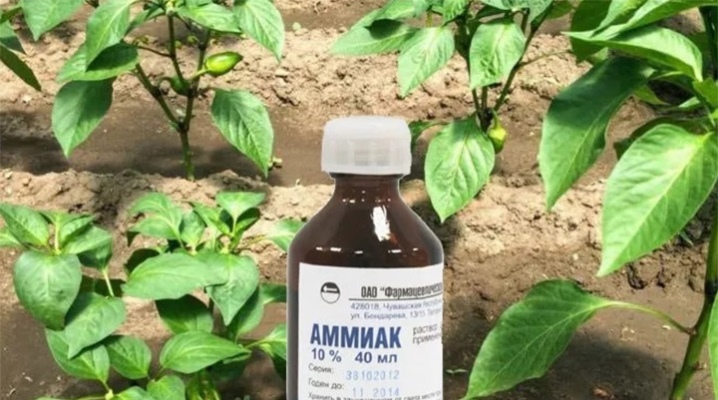
If the plants become pale and yellow, do not bloom or bear fruit, then they do not have enough nitrogen. In order for the seedlings to be strong and strong, it is necessary to feed them with ammonia, which, due to its properties, is an ideal fertilizer. It is also able to rid plants of some pests and diseases, so it is extremely useful to use ammonia.
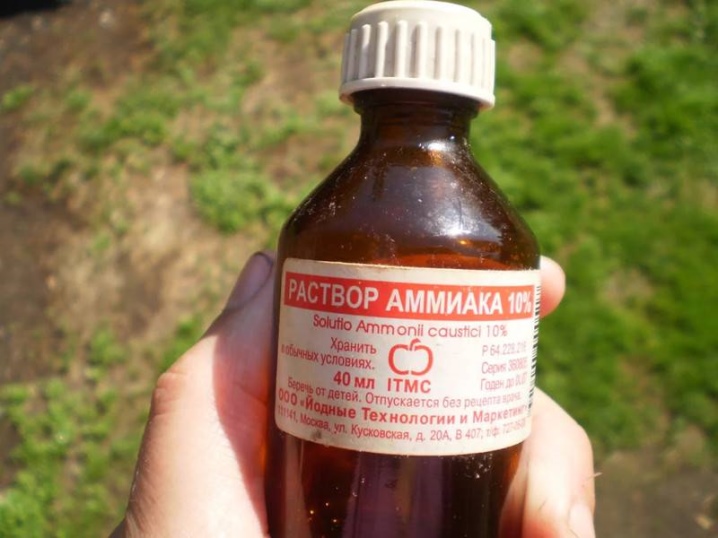
Properties
With the help of ammonia, gardeners can prevent soil acidification and make it of better quality. Together with ammonia, a nitrogenous compound enters the ground, which under natural conditions can be obtained from the processing of humus. The only difference is that humus acts for 2-3 years, and ammonia - almost instantly.
After fertilization, you can see that the stems of the plants have become fleshy and strong, the leaves are enlarged and have a rich green hue. The seedlings become strong, healthy and withstand any diseases. Also, the agent can be used to combat various insects, such as:
- carrot fly;
- wireworm;
- weevil;
- aphid.
The ammonia is able to paralyze the breath of pests, from which they die. Insects have a subtle sense of smell, so they are indifferent to processed seedlings until they get rid of the ammonia smell.
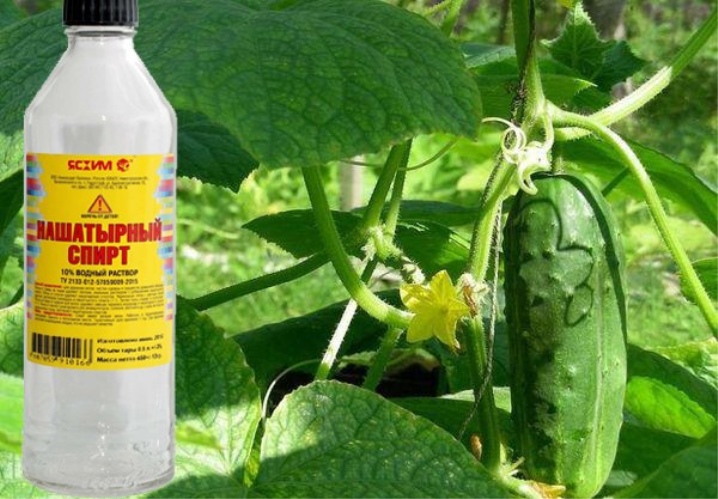
For which plants and when to apply?
Nitrogen nutrition is an important element of plant care, all crops need it. But most often this dressing is used for seedlings of the following plants:
- tomatoes;
- onion;
- cabbage;
- beet;
- currant;
- potato;
- cucumbers.
Many do not know exactly when to feed the seedlings. There are several signs that plants are deficient in nitrogen.
- Leaves turn from green to pale green or turn yellow. This is due to the delay in the formation of chlorophyll. The process of photosynthesis is also disrupted.
- The growth of culture is slowing down.
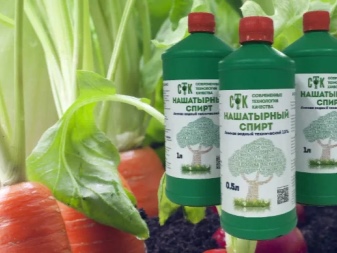
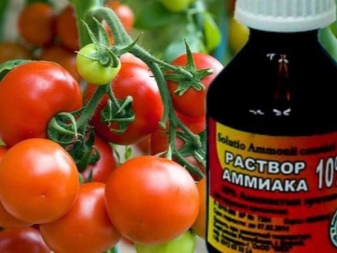
How to dilute and use?
Each crop has its own feeding scheme, so it is necessary to consider each of them.
Tomatoes
Tomatoes consume nitrogen very actively at the beginning of growth, therefore, the seedlings need nitrogen fertilization. 14 days after the shoots have appeared, it is necessary to feed the tomatoes with ammonia for the first time. To prepare the solution, you need to take a teaspoon of ammonia and dilute it in a liter of water. The mixture should be sprayed on the leaves and stems. The back of the foliage is also needed.
When planting tomatoes in the ground, you need to carry out one more treatment with this tool. 10 ml of ammonia should be diluted in 10 liters of liquid. The solution is poured into the wells, each of which should contain 500 ml. The application of fertilizer at this stage allows the seedlings to adapt to new conditions and easily cope with stress. Top dressing should be repeated after 10 days.
It is also necessary to feed peppers and eggplants.
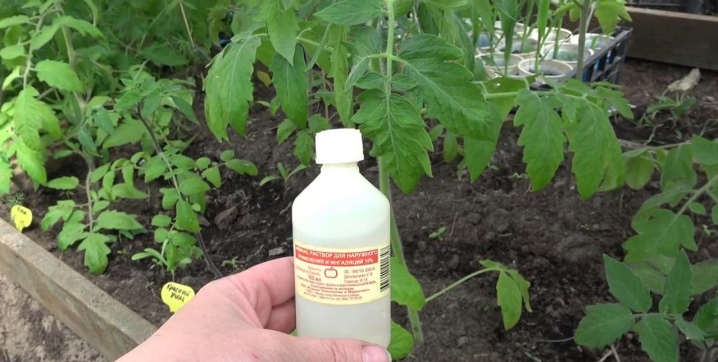
Cucumbers
The use of ammonia for cucumbers begins when lateral shoots begin to grow on the cucumber lashes. The solution is prepared as follows: half a teaspoon of the product must be dissolved in one and a half liters of water. It is important not to mix up the proportions so that the feeding is useful and does not harm the plant.
First, the seedlings should be watered with the solution every week, then every 4 days.When the number of fertilizer applications increases, you need to increase the concentration of the solution - one and a half teaspoons in relation to 1.5 liters of water.
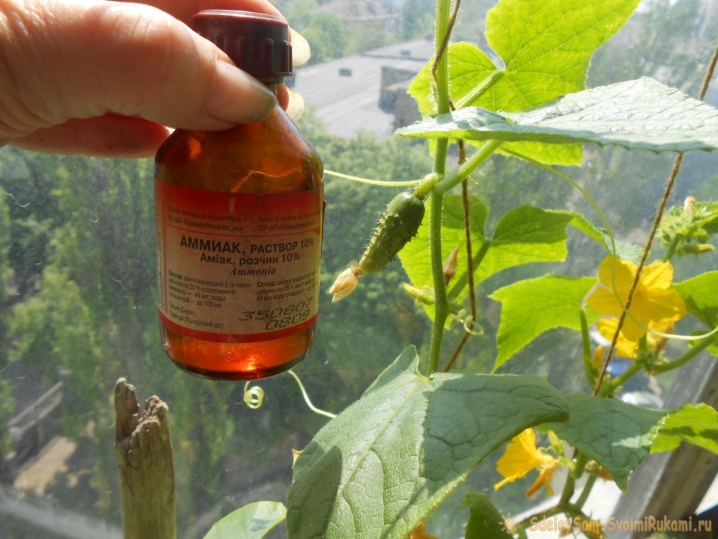
Cabbage
Watering cabbage with dressings based on ammonia is ideal for those who need to grow a large and strong crop. To fertilize this culture, it is necessary to dilute 10 ml of ammonia in a bucket of liquid. During planting, 500 ml of the product must be placed in each of the wells. Ammonia is able to strengthen cabbage seedlings and rid them of harmful insects.
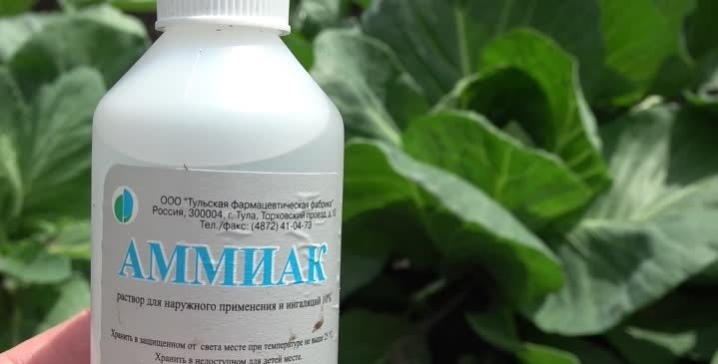
Pepper
Most often, the treatment of pepper seedlings with ammonia is done after the quarter leaves appear on it. Before that, you should not use it, as the plant does not need a lot of nitrogen. There are two stages of processing this culture.
- For the first time, the following solution is needed for feeding: a teaspoon of ammonia is diluted in a liter of water. The pepper should be watered at the root. Care should be taken to avoid getting the product on green areas of seedlings such as foliage and shoots. This feeding is carried out directly on the seedlings.
- The second time you need to prepare such a solution: 3 tablespoons of ammonia per bucket of liquid (about 10 liters). You also need to water the seedlings at the root, without getting on the foliage and stems. It is necessary to carry out top dressing after planting the crop in the ground, this maintains the health of the plants.
To prevent insects from eating pepper seedlings, you need to dilute a teaspoon of ammonia in a liter of water and spray the plants. This will help protect the crop from weevils and fruit flies, which often attack the beds with tender seedlings.
To get rid of aphids, a stronger solution is needed, since this insect is able to take root on almost any plant in any conditions. For the fight to be effective, it is necessary to dilute 50 ml of alcohol in a liter of boiling water. To this solution is added 100-200 grams of laundry soap, which contains the necessary substances in order to kill aphids. Seedlings are sprayed with a spray bottle. If aphids return after a few weeks, the crop should be sprayed again.
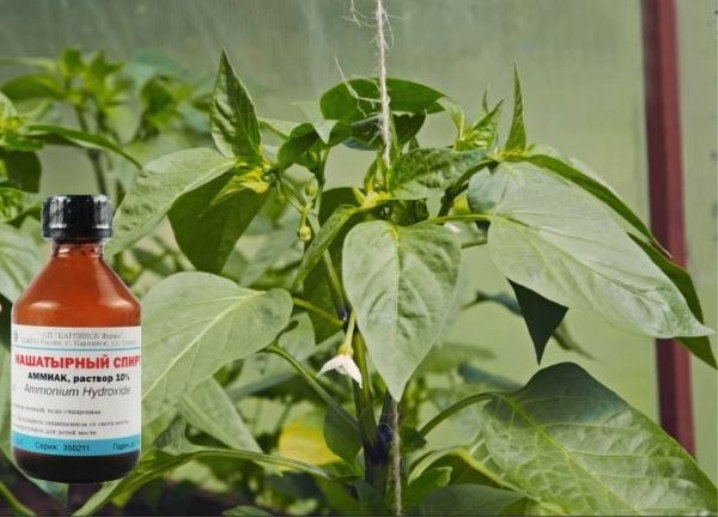
Eggplant
If the eggplant seedlings do not have enough nitrogen, they will become thin and frail, after which the culture will bring a small crop, and in some cases the plants will even die. To avoid such problems, before planting plants in the ground, you need to treat them with ammonia. The preparation standards are as follows: a teaspoon of ammonia dissolves in a liter of water. Seedlings are watered at the root.
This top dressing is needed in the first stages of planting eggplants and after they have been moved to normal soil. Subsequently, the number of waterings is reduced, and after that it is completely possible to stop applying fertilizers.


Onion and garlic
These plants are extremely susceptible to extra root feeding. It is necessary to process crops with a spray bottle, then the solution will be sprayed evenly and work efficiently. To prepare the fertilizer, you need to dilute 3 tablespoons of ammonia in 10 liters of water. Foliage should be processed.
The treatment is carried out as a preventive measure against growth, and is also a preventive measure against dryness, curl and yellowness of the leaves. Salmon is an agent that can be dangerous to humans, but is always beneficial for plants, as it contributes to their favorable growth.
Also, this tool relieves gardeners from a variety of pests that can significantly spoil the seedlings. It is important to remember the dosage, because each plant needs to prepare its own solution.
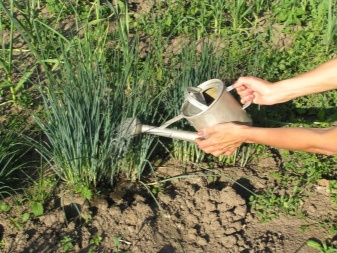
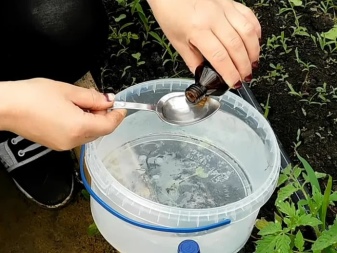
Security measures
Ammonia is in a group of products that can harm human health. It is able to enter the human body through the skin and mucous membranes. Therefore, it must be used carefully for various crops, it is important to observe safety measures:
- when preparing the solution, it is worth using a respirator so that contact with the product is minimal;
- in the process of spraying, it is necessary to protect the eyes with the help of special glasses;
- work must be carried out with gloves;
- at the end of the spraying procedure, wash your face and hands thoroughly;
- clothes, in which a person was in the process of processing, must be removed and sent to the wash.
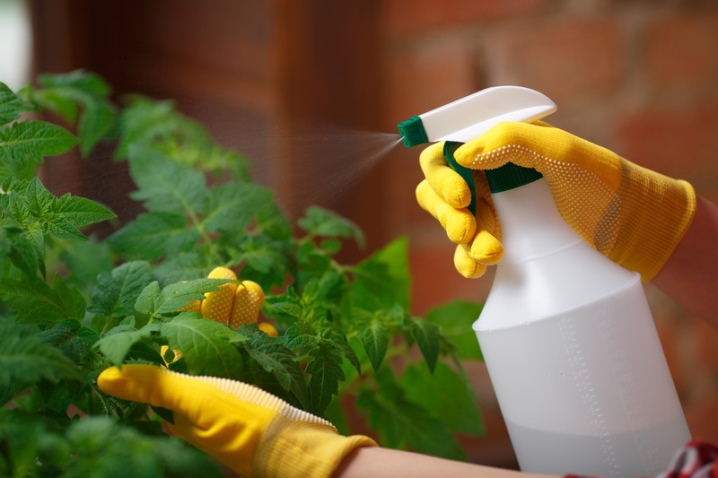
When should you not use the product?
Experienced gardeners do not recommend using ammonia in the following cases:
- in the sun, since in too hot weather the risk of poisoning with ammonia vapors increases;
- with high blood pressure or symptoms of VSD;
- if there are other people near the plants without protective equipment.
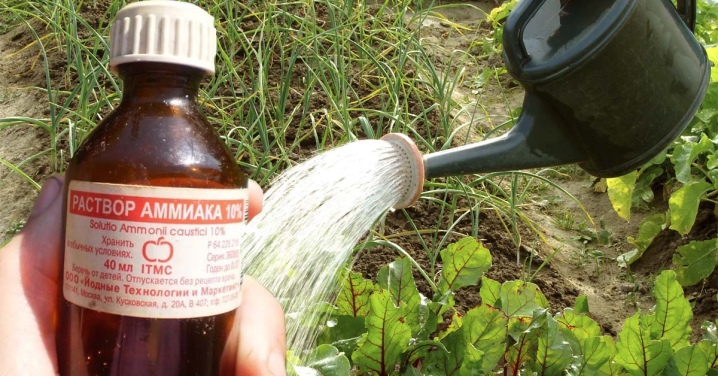
For more information on how to use ammonia as fertilizer for tomatoes, see the next video.













The comment was sent successfully.